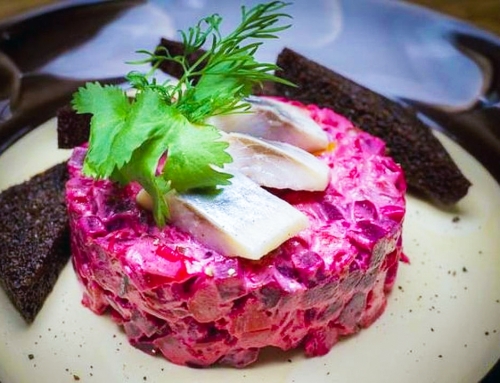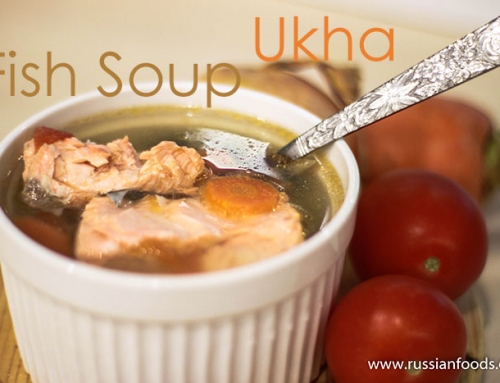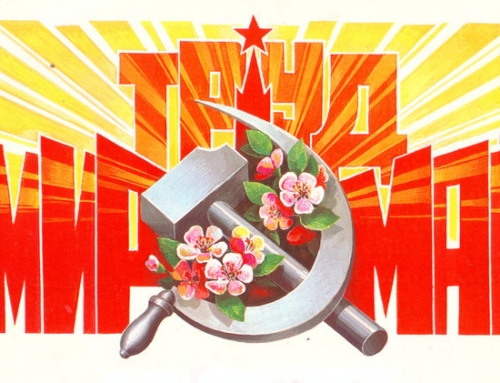Traditional Russian dishes are often associated with borscht, mayo-based salads, porridge and endless variations of savory dumplings and pierogies. What many may not know is that Russian piquant cuisine is supplemented by a scrumptious arrange of traditional Russian sweets and desserts.
From home-made jams and preserves, to authentic Russian cakes, tortes and even handmade candies — when it comes to sugary confections, Russians seem to have a hereditary sweet tooth. They have perfected the art of dessert making and have come up with a wide selection of irritable treats.
We’ve polled our friends, scoured the internet and dug through grandma’s old recipe books to come up with the most popular Russian sweets.
Alenka Chocolates
Alenka is the most recognized brand of Russian-made chocolate. While chocolate connoisseurs may not like its simple milk chocolate formula, it is certainly the most popular and biggest selling domestically produced candy in Russia’s history. To understand the appeal of Alenka, we must travel back to the days of the Soviet Union.
In production since 1965, Alenka chocolates were the byproducts of a special socialist food program implemented by the Soviet regime to mass produce affordable (not to be confused with widely available) chocolate. To find the right packaging and fresh face for the new chocolate bar, Russia’s Red October Chocolate Factory announced a formal competition in a central Moscow-based newspaper. The winner was a photo of a young girl, submitted by an artist who actually worked at the factory. Following the release of the now infamous blue-eyed baby in a traditional head kerchief on the package, rumors circulated that the adorable little girl was actually Svetlana Allilueva — Stalin’s own daughter.
Today, Alenka remains one of the most widely sold chocolate bars and is strongly associated with Russia and its Soviet past. You can find an array of these candies, complete with the classic packaging in our online store.
Ptichye Moloko (Bird’s Milk)
Whether in the form of a cake or candy, Ptichye Moloko (aka Bird’s Milk) is probably the most delicious Russian dessert. A simple slice of marshmallow glazed in chocolate — what’s not to like, right?! But don’t let its name and simple appearance deceive your senses.
One of the first cakes to be patented in the Soviet Union, Ptichye Moloko was developed by famed dessert maker and pastry chef, Vladimir Guralnik and his group of confectioners. The cake’s birthplace was one of the most renowned restaurants of the time — Prague Restaurant in Moscow. Guralnik and his team developed the original recipe based on a similar marshmallow French dessert with a few caveats. The secret ingredient is agar-agar, a gelatin-like substance made of boiled seaweed that creates an airy consistency of a light mousse or soufflé, rather than a dense concentration of most marshmallows.
Ptichye Moloko instantly became a sensation and has been popular in Russia and neighboring countries since its inception in 1978. Its name is a reference to a Slavic legend of something so rare that its nearly unattainable — Bird’s Milk — an oxymoron by nature.
Many know that the biggest compliment is imitation, and Ptichye Moloko has no shortage of copycat versions. Many imitations are delicious in their own right, but the authentic Ptichye Moloko cake can still be found baked in Prague’s bake shop and packaged in its original blue box. If you can’t make it all the way to Moscow, treat yourself to the next best thing — Ptichye Moloko candies, available online at RussianFoodUSA.com
Tula Pryanik (Gingerbread)
One of Russia’s original sweets is the simple Pryanik (Gingerbread). Known as “honey bread” or “spice bread” gingerbreads date back as far as ancient Egyptians. The desserts came to Russia around the turn of the 9th century when the disparate East Slavic and Finno-Ugric tribes joined together into a unified state. At the time, gingerbread was baked from rye flour mixed with honey and berry juice.
The term pryanik comes from its Russian root pryanost’ meaning spices. As Indian and Middle Eastern spices became more prevalent in Russia in the 12th and 13th centuries, the honey bread recipe was altered to include cinnamon, cardamom and other spices.
Tula is still the site of the most famous Russian Gingerbread production — about 120 miles south of Moscow. Distinctive in taste and appearance, the Tula Pryanik is traditionally filled with jam or sweetened condensed milk. At the turn of the century, the Russian gingerbread became so popular that an entire museum was opened in Tula devoted to the story and history of this delicious dessert. Not making it to Tula this year? No problem — you can still enjoy the classic pryanik by ordering it from here.
Churchkhela
Churchkhela is a traditional home-made candy shaped like a sausage and found mainly at seaside resorts. Rooted in Caucasian cuisine, it’s made from nuts (almonds, walnuts and hazelnuts) threaded onto a long string and dipped in sweet grape juice that has been thickened with flour.
Chewy and delicious, churchkhela needs to dry in the sun for about two weeks before it is ready to eat — but anyone who’s tasted this delicacy will agree that’s it’s definitely worth the wait! If you’re not planning a trip to the Russian seaside, you can find this traditional sweet in many Russian and ethnic deli stores across the U.S.
Chak-Chak
Chak Chak is another dessert that originates from the Turkish people.
Made from soft dough that is deep fried and drenched in hot honey syrup, this dessert is usually shaped like a small honey mound or pyramid. Still considered the national dessert dish of the Tatars and Bashkirs — Russia’s largest ethnic minorities — chak-chak is especially popular in Tatarstan and Bashkiria (in the Ural Mountains). The simple dough is cut into small pieces that resemble short noodles or even nuts, deep fried in oil, covered in honey and left to harden before serving. It’s a sweet and delicious accompaniment to any authentic Russia tea tradition.
Ingredients:
Below is a simple recipe for your baking pleasure.
- 5 eggs
- 3-4 cups flour
- 1/2 cup milk
- 2 tsp sugar
- 1/2 tsp salt
- vegetable oil for frying
Syrup
- 12 oz honey
- 9 oz sugar (about 1/2 cup)
Instructions:
- Beat the eggs in a bowl, slowly adding the sugar, salt and milk. Add flour to make dough soft and fluffy — like for pelmeni or vareniki. Put the dough in a pan and cover with a lightly damp cloth. Let rest for about an hour.
- Roll out the dough to a 1/4 inch thickness and cut into small, thin strips. Roll the strips into tiny balls and set aside.
- In a large frying pan heat up vegetable oil and fry dough until golden brown. Try to work in small batches so that all the pieces can move freely in the oil and do not stick together. Remove from oil and place in a deep bowl.
- To prepare the syrup, pour honey into a saucepan and heat on medium heat. Add in the sugar and stir constantly over medium heat until the sugar is dissolved.
- Once the sugar has melted, pour the hot syrup onto the chak-chak and mix well together. Lay the chak-chak flat onto a plat or baking sheet and spread with your hands. To prevent sticking, we your hands in cold water and form the chak-chak into small pyramids.
- Before serving, let the chak-chak rest for about an hour until it reaches room temperature.
Pastila
Pastila is reminiscent of another dessert known as the Turkish Delight. It first appeared in Russia around the 16th century when Russian merchants began trade with the Middle East and experimented with mixing fruits like sour apples and tart cranberries with honey and egg whites. The paste was baked in the oven for several hours before being layered and left to dry.
For nearly 300 years, the recipe for pastila was a closely guarded secret and was among the most popular fruit confectionary delights. But when French candy makers discovered a new delicacy by adding sugar and whipped egg whites to fruit puree — the French marshmallow was born. With that, pastila took a back seat to another Russian dessert prepared in a similar way — the zefir.
Zefir
On the outside Zefir is the Russian version of the French marshmallow, produced in many countries across the former Soviet Union. This soft and airy dessert looks like a white or pink cloud and made with purred fruit (like apples, strawberries, and peaches), egg whites, sugar and pectin. Its distinct smooth and creamy texture inside are what set it apart from its equally famed French cousin.
Served usually with tea or coffee, or as an afternoon snack, zephir can now be found in most grocery stores in Russia and many ethnic delis around the world. The name zefir (sometimes spelled zefyr) comes from its delicate and tender nature — reminiscent of a soft and gentle breeze. You can enjoy a piece of this heavenly zefir dessert today, just click and order here.
What’s your favorite Russian sweet? Share with us on Facebook or leave a comment below. And stay tuned for special candy offers from RussianFoodUSA.com — just in time for Halloween.












